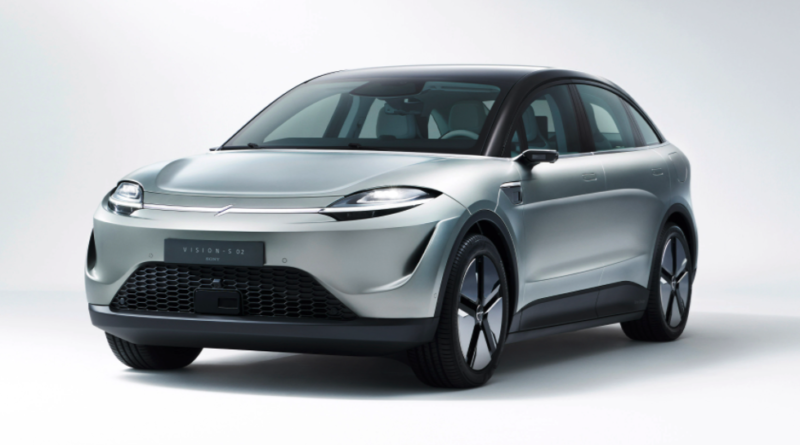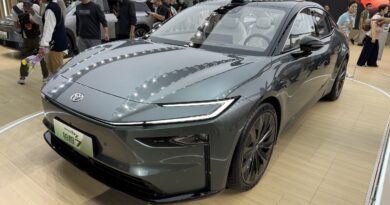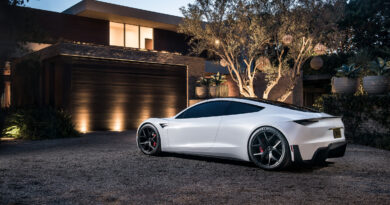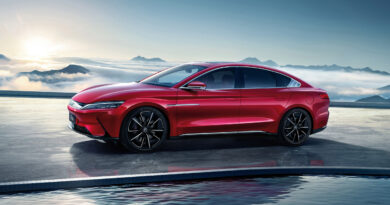Sony reveals new electric SUV, drives closer to sales launch
The reveal of a Sony battery electric seven-seat SUV at the 2022 CES technical fair in Las Vegas has set the stage for the Japanese consumer electronics conglomerate to put a range of EVs on sale.
The Vision-S 02 wagon appeared exactly two years after the original Vision-S sports sedan was rolled out at CES – and one year after the Sony Vision-S was seen testing on public roads – although back then Sony was describing the sleek four-door as a product testbed and downplaying any prospect of production.
But this year, alongside the Tesla Model Y fighter, a new company called Sony Mobility Inc. was also unveiled at CES, charged with the task of figuring out just how it goes about getting into the auto business.
“We are exploring a commercial launch of Sony’s EV,” confirmed Kenichiro Yoshida, the company’s chairman, president and CEO, during his live CES presentation.
FULL EV CALENDAR: Every new electric car due soon
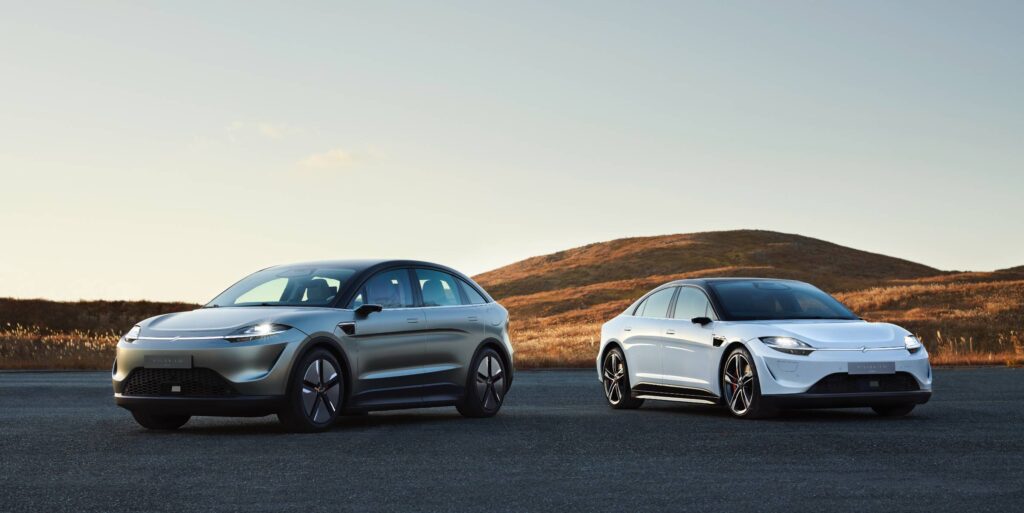
“This is a bold step into the future bringing our experience in creating diverse and innovative solutions to the world.”
The announcement would have been a surprise for many observers, who have focussed their attention on the on-again-off-again plans of tech giant Apple to enter the EV arena.
Sony has been low-key about it EV plans, providing a slow and steady trickle of updates about the Vision-S; testing in Japan, testing in Europe, even an example in Germany being remotely driven from Japan.
It was all presented as a way of developing imaging and sensing tech, the human machine interface and 5G connectivity to sell to auto makers. But Yoshida says there was more interest at Sony about the prospect of building its own complete EVs than was being let-on publicly.
“The excitement we received after the announcement of Vision-S encouraged us, really encouraged us to further consider how we can bring creativity and technology to change the experience of moving from one place to another,” he said.
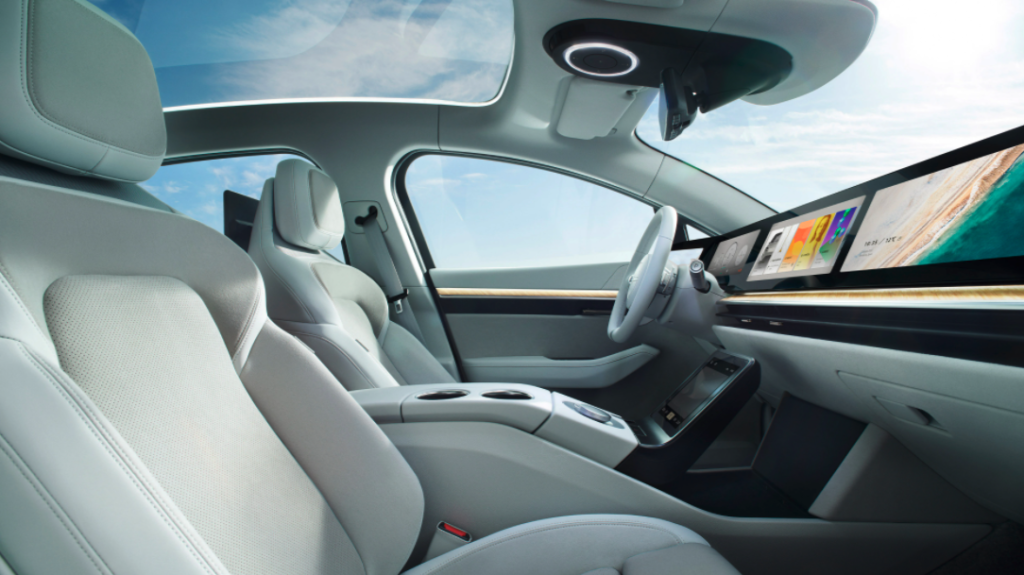
No detail of how Sony might go about building and selling EVs were offered, but it is worth noting a key Vision-S development partner is Magna-Steyr, which already licenses its EV architecture to the EV start-up Fisker for its Ocean SUV.
It will also build the Fisker Ocean at its plant in Austria.
Spec-wise the Vision-S 02 and Vision-S 01 (as the sedan is now called) share their cloud and mechanical platforms, 3030mm wheelbase, 4895mm overall length, 2 x 200kW e-motors sitting on both axles to deliver all-wheel drive and an air sprung double wishbone suspension.
The 02 is wider, taller and at 2480kg, substantially heavier than the 01. Sony says the additional interior volume of the SUV allows it to deliver different entertainment experiences and accommodate different lifestyles (families perhaps?).
Inside the 02 and 01 share a tri-part infotainment screen stretches across the dashboard from A-pillar to A-pillar. There are screens on the back of the front seats for second row passengers in the 02. A glass panoramic roof is also featured.
The latest Vision-S 01 and/or 02 technologies highlighted by Sony to coincide with CES include Level 2+ driver assistance aided by CMOS image and Lidar sensors installed around the vehicle. The vehicle’s sound system and HMI systems interact with the driver to raise awareness of exterior issues, such as the presence of emergency vehicles.
This capability links in with autonomous driving tests also underway with an emphasis on remote operation, hence the German/Japan test last month.
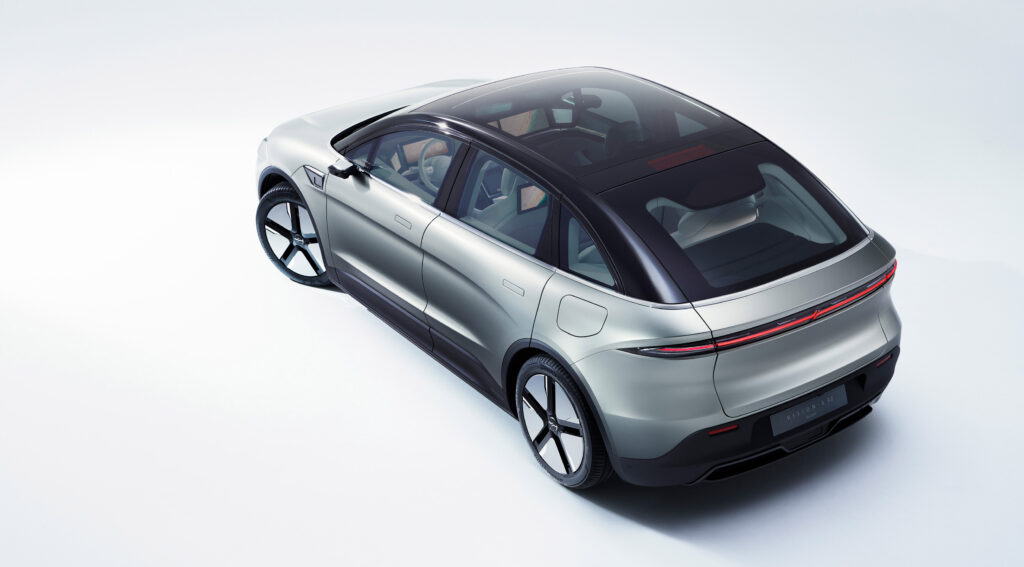
Time-of-Flight (ToF) sensors are used in Vision-S to provide monitoring functions for driver authentication and to watch over passengers. They also support intuitive gesture and voice commands that are intended to enhance usability of the interface.
The vehicle will also include a new function that allows users to customise the display theme and the acceleration and deceleration sounds of the vehicle.
Vehicle settings, key locks, and user settings can be synchronised by linking the vehicle to the cloud using mobile communication, including high-capability, high-speed and low-latency 5G communication between the car and the cloud. Updates are capable via over the air (OTA).
Understandably, entertainment is a high priority for a Sony EV. In-seat speakers are claimed to create a three-dimensional sound field and an “immersive music experience”.
Also included is the digital ‘Bravia Core’ video service that enables shared or individual video playback on the front or rear screens.
Gaming capabilities have expanded to being able to play PlayStation games through a remote connection to a console at home, in addition to the ability to play streaming games through the cloud.

